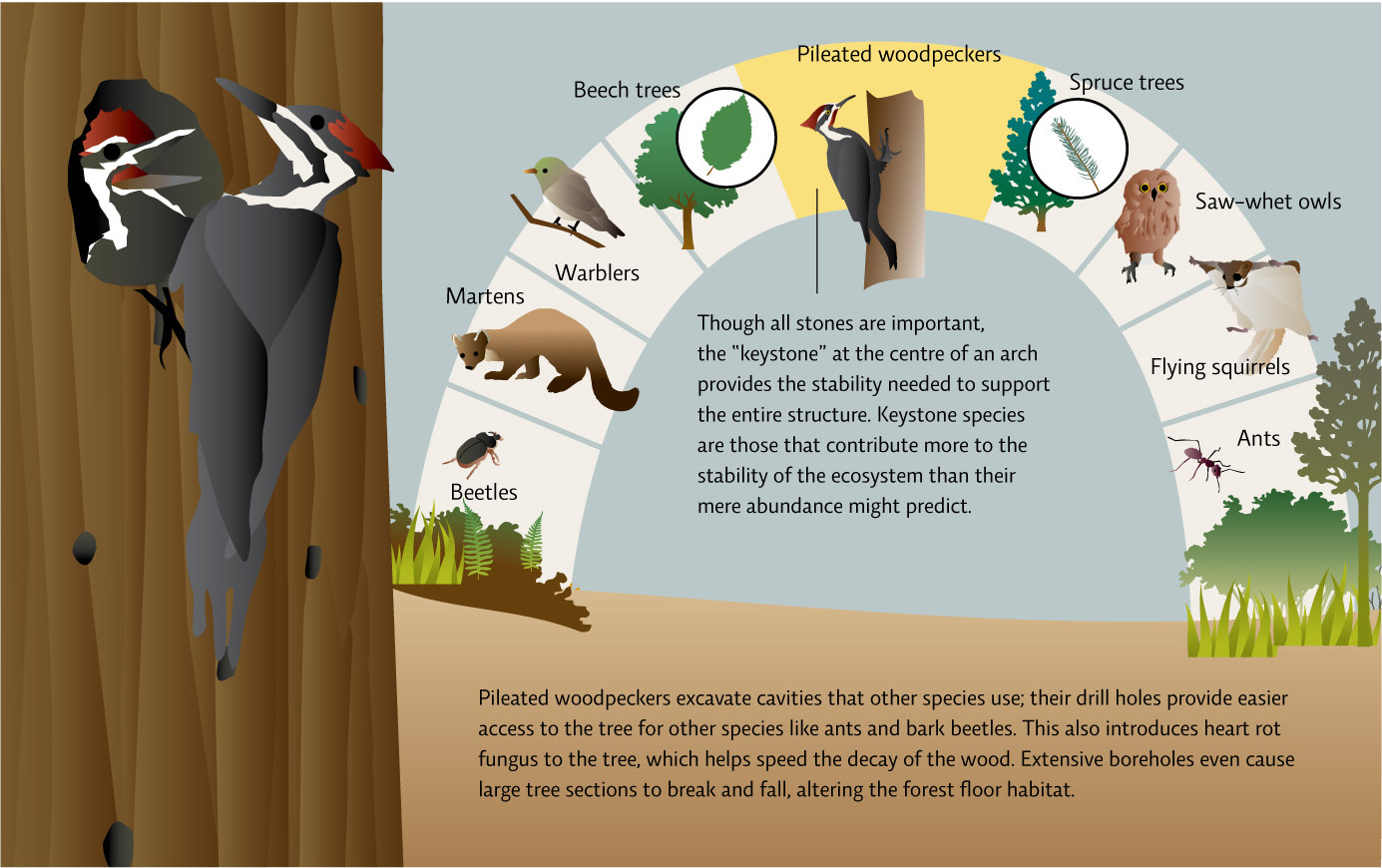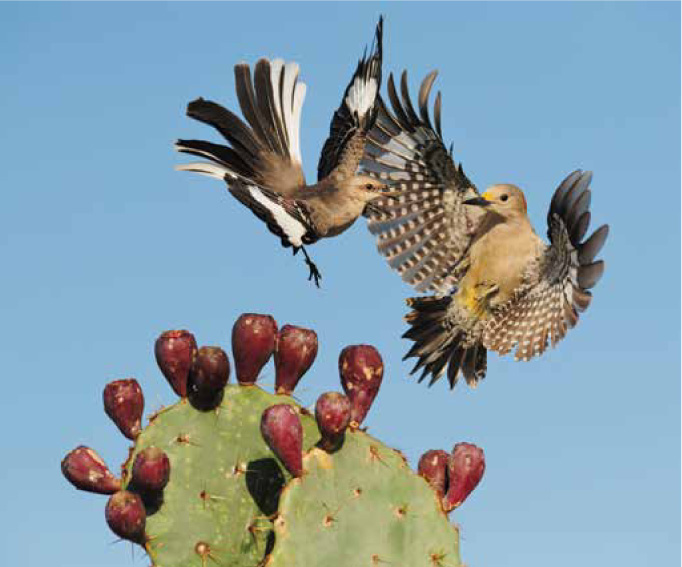8.5 Relationships are crucial in an ecological community
Although the Acadian forest is brimming with biological activity, some species have more of an impact than others. In the last remaining patches of Acadian forest, beavers are using material from a variety of tree species, old and young, to construct dams and their lodges.
The beavers’ actions have many effects on neighbouring species, both positive and negative. Their dams can completely alter the flow of a river to create ponds and wetlands, which serve as new habitat for a variety of organisms from frogs to plants. But for fish that need to cross a dam to get to their breeding grounds, the hurdle can be insurmountable. And when heavy rains come, lowlying areas near the dam become flooded. “Beavers are one species—like humans—that have many downstream effects on their environment,” says Villard.
139
This makes the beaver a keystone species—one that impacts its community more than its mere abundance would predict. It’s a species that many other species depend on, and one whose loss creates a substantial ripple effect, disrupting interactions for many other species, and ultimately, altering food webs. So when the Acadian forests are cleared, and beavers can’t build as many dams, many other species suffer.
An ecosystem as complex as the Acadian forest has more than one keystone species. The pileated woodpecker is another keystone species, as it excavates crucial cavities in trees used by many other species, such as songbirds, owls, flying squirrels, martens, and wood ducks, who cannot create these cavities on their own. [infographic 8.6]

The multiple and varied effects of keystone species show just how important species interactions are for community viability. Communities are all about relationships. Successful communities are those where a certain balance has evolved between all the organisms living there. Species interactions serve many purposes; for example, they control populations and affect carrying capacity. Biodiversity (lots of species and lots of variety within a species) is important, because more diversity means more ways to capture, store, and exchange energy and matter. But it is not sheer numbers that matter most; it is all the connections between species—how they help or hurt one another—that determine how, and how well, an ecosystem works. Each species is unique and thus interacts in its own unique way with all the species around it.
Many species have adaptations that bind them to others or that allow them to coexist. For instance, in some years, trees will release large numbers of seeds, which spur increases in seed-eating rodents such as chipmunks, leading to increases in the populations of their predators. There are fewer seeds the following year, so rodents are forced to look for other food sources, such as bird eggs or their young, which affects those population numbers, as well.
140
Known as mast yearing, the tree’s strategy is an adaptation to deal with very effective seed-eaters. If a beech tree produced the same amount of nuts (or mast) every year, the populations of the animals that eat beechnuts would stabilize at whatever level the nut crop would support and thus decrease the chance that many beechnuts would escape being eaten. But if the tree produces a low crop for a few years, that lowers the predator population; so in the years when the trees produce a bumper crop, they are essentially flooding the market with more nuts than the residents can eat. It is in these mast years that the trees experience the most reproductive success. The erratic nature of the mast yearing (varying from 2 to 7 years), tied in with the short lifespan of most nut-eaters, makes this an effective adaptation for the tree.
Competition—the vying between organisms for limited resources—is another way that species interact. Competition between individuals of the same species is generally stronger than competition that might occur between individuals of different species. This is because members of the same species share the exact same niche and thus compete for all resources in that niche, whereas members of different species may compete for only a single resource, like a certain food source or water.
If two different species try to occupy the same exact niche, the less successful species will die out or be forced to leave the area if it cannot switch to use another available resource. Some competing neighbours “switch niches” by finding a way to partition resources—that is, they divvy up the goods in a way that reduces competition and allows several species to coexist. In the Acadian forest, different species of warblers that feed on tree insects often occupy different regions of the same tree. Cape May warblers, for instance, tend to feed in the uppermost regions of trees, toward the outside of branches, while Bay-breasted warblers pick spots closer to the middle of the tree, and Myrtle warblers hang close to the bottom. This strategy—known as resource partitioning—increases species diversity, which benefits the entire community.
141
There are other strategies, too, that keep an ecosystem functioning and strong. Some of these interactions show a tremendous interdependency on the part of the participants. Known as symbiosis, these relationships can take one of several forms: mutualism, where both parties benefit; commensalism, where one benefits from the relationship but the other is unaffected; or parasitism, where one benefits from the relationship and the other is negatively affected (this is actually a form of predation).
By ensuring that all populations persist, even as individuals die, these delicate checks and balances allow more energy to be captured and exchanged, and thus increase the amount of biomass the ecosystem is able to produce. [infographic 8.7]

When individual species are lost, or when a landscape is physically altered, the balance is tipped. In the case of keystone species, the forest can withstand small reductions in the numbers of beavers and pileated woodpeckers—but if too many disappear, the entire ecosystem suffers. “I sometimes compare keystone species to rivets in airplanes,” says Villard. “A plane can lose many rivets and still fly—but if it loses one too many, it goes down. The same thing is true in ecosystems.”
And when that happens, things can fall apart. Fast.
